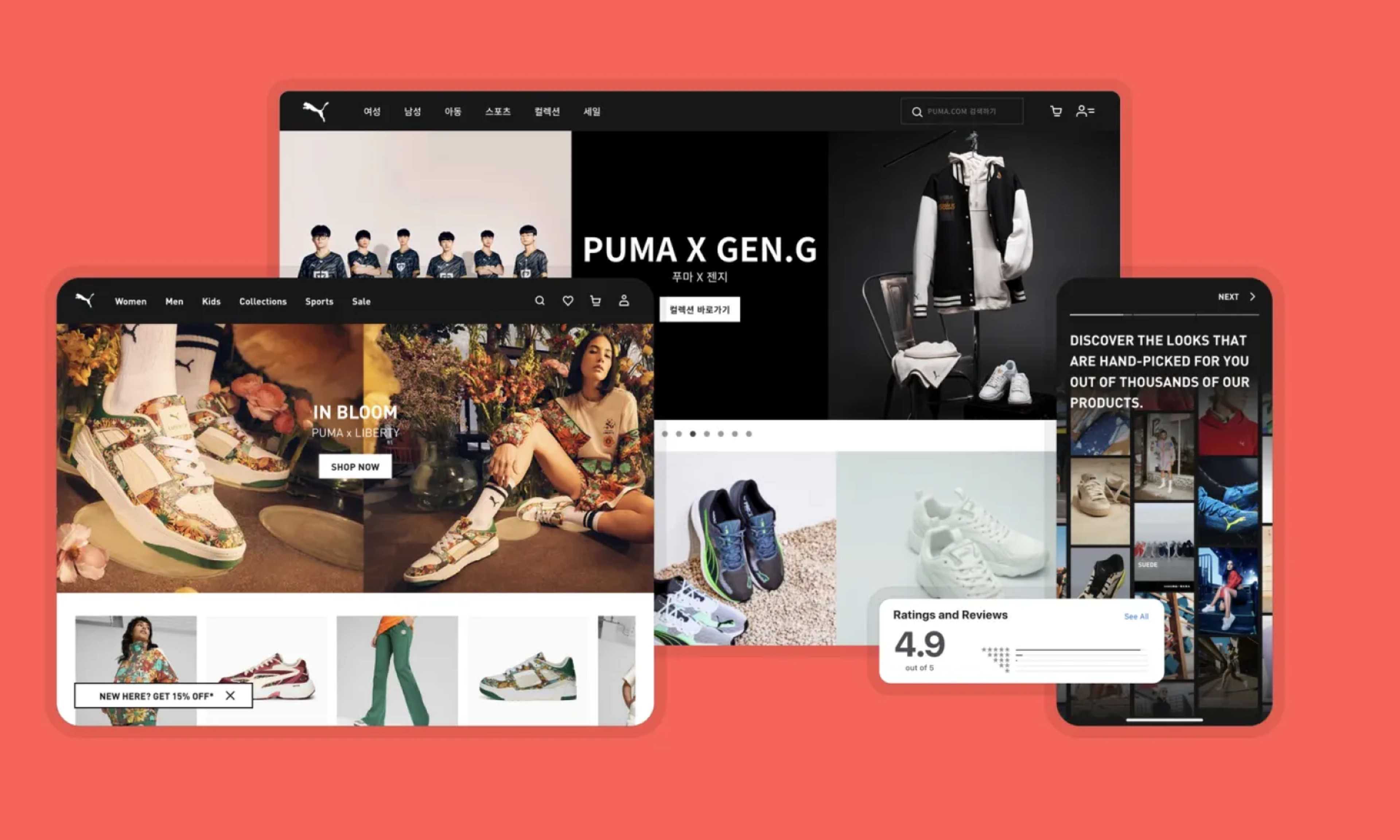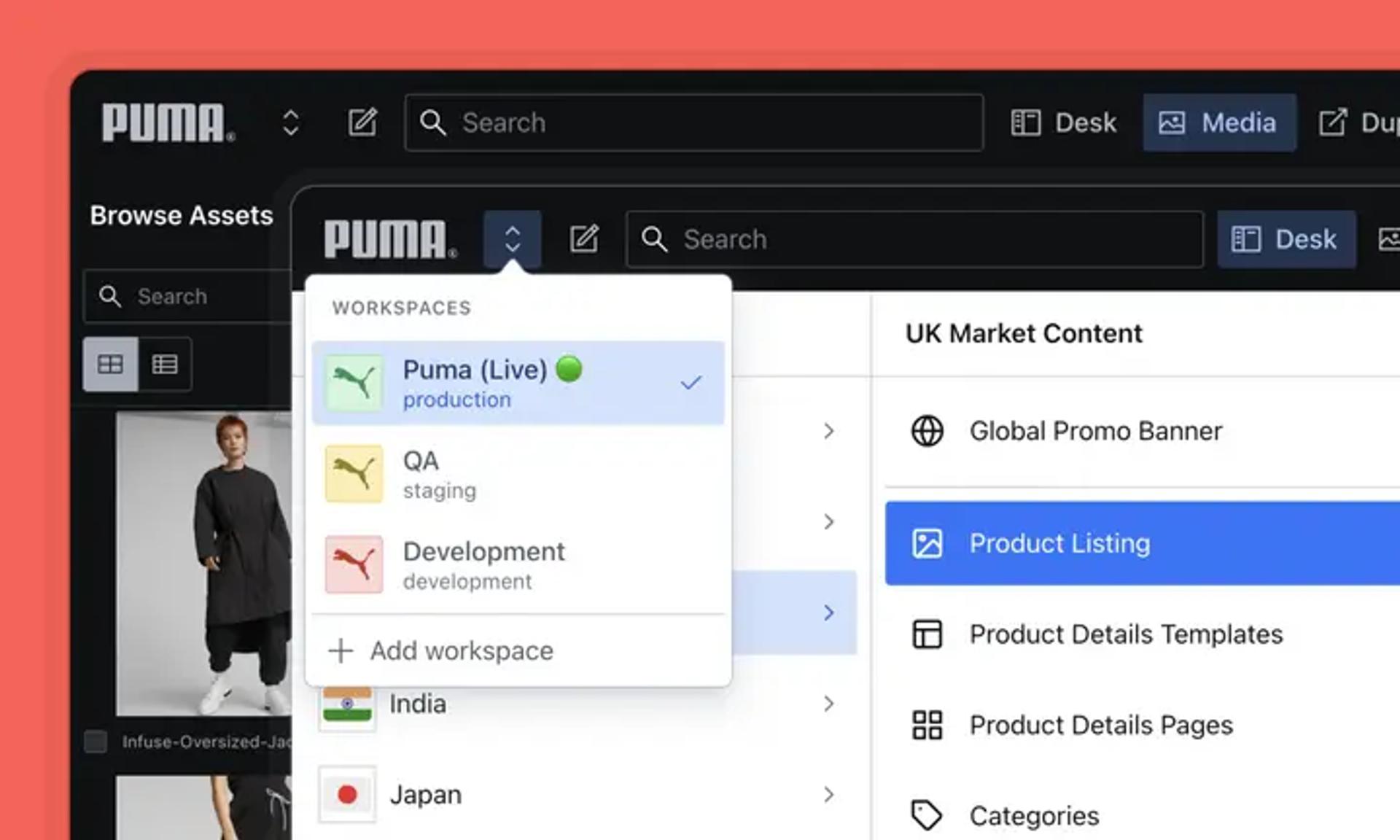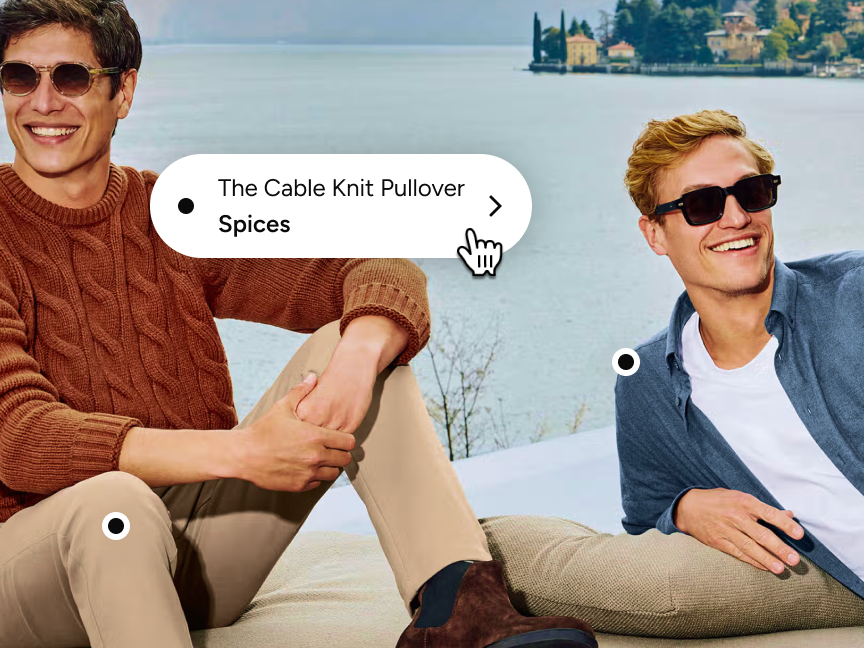Story Highlights
- Decouple content from commerce platform to accelerate time-to-market and unleash innovation
- How Puma uses Sanity
- Unified backend for all of Puma’s properties, eliminating inefficiency of content silos
- Multi-tenancy: Custom-tailored studios for global teams, powered by shared dataset to drive reuse and consistency
- Personalization: Leverage user and campaign data from Salesforce to run targeted campaigns directly from Sanity
"Sanity is the connective tissue for all of our digital properties, syncing content for all of PUMA's global markets."
Get a behind-the-scenes look at how PUMA runs fast with Sanity and Next.js
The Vision
Seeking a holistic experience across regions and products
PUMA is one of the world’s leading sports brands, designing, developing, selling and marketing footwear, apparel, and accessories. The company’s vision was to build a more holistic digital experience across regions and product lines, and integrate with offline content at events such as Fashion Week. The goal was to build a content engine on top of Salesforce, the commerce engine and repository for PUMA’s product catalog and related content, like images and video.

The Challenge
Sanity partner Formidable accepts the challenge
The transformation called for an entirely new, flexible content platform. That’s why PUMA decided to tap global design, product, and engineering consultancy Formidable to create the new stack. Formidable, which specializes in complex software and design projects for brands like Starbucks, Microsoft, and Walmart, partners with its clients to build transformative new digital experiences that humans find exceptional.
“We were excited to work with Formidable to create a composable e-commerce system based on modern headless principles,” says Bettina Donmez, senior manager of e-commerce platform development at PUMA. “We knew they had the expertise to help us build the right stack to achieve our business goals.”
The Solution
Building a nimble content engine
E-commerce is a game of continual adaptation. Customer needs and preferences change, and businesses must evolve to meet them. PUMA was looking for the right technology that would enable them to innovate and stay nimble amid this constant evolution.
In the search for a new content platform, Sanity emerged as the favored choice. “We were especially excited to use Sanity because it boasts unlimited flexibility and has useful features like fine-grained user permissions, previews and an asset pipeline for working with multimedia,” says Luke Jackson, a senior frontend developer at Formidable. “Sanity also encouraged the use of a structured data ecosystem, which aligned with PUMA’s vision to build a system that could shape itself to future initiatives.”
Sanity’s content platform enables PUMA to be much more agile when they create campaigns, reusing content and making it dynamic so it can run more autonomously. This includes resizing images and videos automatically for the destination channel, or auto-populating content for specific campaigns at desired times. To date, the PUMA team has created more than 500 category landing pages, over 4,000 hero banners, staged over 100 campaigns and created more than 55,000 pieces of reusable content, all within Sanity.

The Results
Structured content yields reuse and innovation
Sanity went through a content modeling exercise with the PUMA team to build a structured ecosystem for all of PUMA’s website and app content, with content types, fields, design elements, and other metadata. For any organization, the structured content model is the secret sauce powering the customizability and automation of digital experiences.
PUMA found this approach so valuable that Sanity has become ingrained in PUMA’s workflow, leading them to create an internal Sanity Review Council—a team dedicated to vetting requests for new fields and additions to the system so updates are made strategically and with consensus.
“If we think of content pieces as building blocks, it means we can use each brick again and again,” says Donmez at PUMA. “Depending on what you want to communicate, you can spin up a full e-commerce page or a purely merchandised product listing page that speaks about related products we have at the fashion show. The possibilities are endless.”
Early feedback from the PUMA team was overwhelmingly positive, largely because the efficiency of the setup process was apparent from the beginning of the proof of concept stage. Previously, it was time consuming and complex to set up a preview environment so that the PUMA team could provide feedback on production sites. Using Sanity with Next.js, a single user can deploy any build, to any environment, in just 5 minutes—a massive improvement. Additionally, it brings a greater sense of collaboration between developers and content creators.
A single source of truth = everyone in sync
Sanity ingests just under 12,000 categories every hour from the Salesforce API in order to reference them in Sanity’s Studio interface for content creators. This gave the PUMA team more freedom to make creative choices and build a dynamic content engine.
For example, because PUMA launches many campaigns for its products, seasons, or special sporting and fashion events, the team needs to be able to group all these different types of content by marketing campaigns. With Sanity, the team can ingest data grouped by campaign and shape it via the editing environment, Sanity Studio. Sanity also enables user group search through the integration with Salesforce so campaigns could be targeted by persona. Not only that, but PUMA is able to set up access controls so that only qualified content managers can work on specific campaigns.
Before working in Sanity, much of PUMA’s content was distributed across local servers that were difficult to merge and get in sync. The team brought all of the content for PUMA’s digital properties—web, mobile web, and native iOS and Android apps—into Sanity as a single unified ecosystem that is available in the cloud. As a result, content can be pushed once and distributed everywhere, in full synchronization.
As part of this ecosystem, Sanity established one global, single home for all PUMA content that can be used in every market. Instead of operating the digital properties with independent CMSes, multiple regions or subsidiaries can now share one multi-tenant SaaS CMS instance with shared support and roadmap.

An infinitely scalable content infrastructure
Using Sanity as a holistic content information management system opens up many opportunities for PUMA to build more creatively and with less effort, too.
Learn more→There are so many exciting combinations that PUMA can create with Sanity. Now that we have a structure, it’s infinitely scalable.
Scale your global content operations with Sanity
Sanity’s single source of truth for content helps enterprises with complex content workflows move faster, create innovative digital campaigns, and achieve a consistent and inspiring brand experience across markets and products. Reach out to our team to find out more, or you're a developer who wants to try Sanity, you can get started right away.








